
The PlayStation is a home video game console developed and marketed by Sony Computer Entertainment. It was released in Japan on 3 December 1994, in North America on 9 September 1995, in Europe on 29 September 1995, and in Australia on 15 November 1995. As a fifth-generation console, the PlayStation primarily competed with the Nintendo 64 and the Sega Saturn.

Artdink Corporation (株式会社アートディンク) is a Japanese developer of video games, based in Tsukishima, Tokyo.

The PlayStation Portable (PSP) is a handheld game console developed and marketed by Sony Computer Entertainment. It was first released in Japan on December 11, 2004, in North America on March 24, 2005, and in PAL regions on September 1, 2005, and is the first handheld installment in the PlayStation line of consoles. As a seventh generation console, the PSP competed with the Nintendo DS.
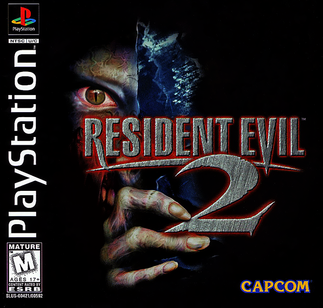
Resident Evil 2 is a 1998 survival horror video game developed and published by Capcom for the PlayStation. The player controls rookie cop Leon S. Kennedy and college student Claire Redfield, who must escape Raccoon City after its citizens are transformed into zombies by a biological weapon two months after the events of the original Resident Evil. The gameplay focuses on exploration, puzzles, and combat; the main difference from its predecessor are the branching paths, with each player character having unique storylines, partners and obstacles.

Sony Interactive Entertainment LLC (SIE) is a Japanese multinational video game and digital entertainment company and a subsidiary of Sony Group Corporation. Jointly established by two subsidiaries in 2016, it primarily operates the PlayStation brand of video game consoles and products. It is also the world's largest company in the video game industry based on its equity investments.
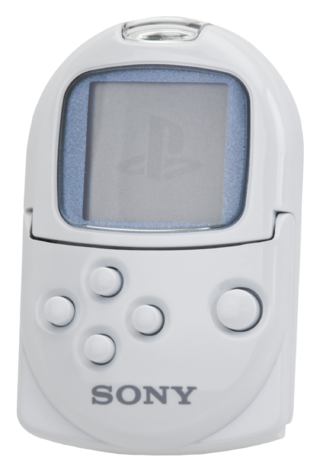
The PocketStation is a memory card peripheral by Sony Interactive Entertainment for the PlayStation home video game console. It was released in Japan in 1999. The device acted not only as a memory card, but was interactive itself via a small monochrome LCD display and buttons on its case. Many PlayStation games included software that could be downloaded and played on the PocketStation. A release in Europe and North America was planned, but was ultimately canceled. The PocketStation shares similarities with Sega's VMU for the Dreamcast.
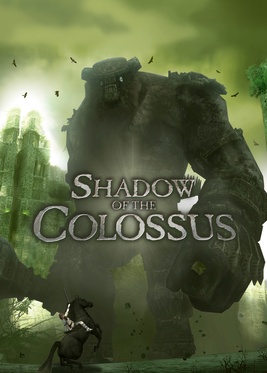
Shadow of the Colossus is a 2005 action-adventure game developed by Japan Studio and Team Ico, and published by Sony Computer Entertainment for the PlayStation 2. It takes place in a fantasy setting and follows Wander, a young man who enters an isolated and abandoned region of the realm seeking the power to revive a girl named Mono. The player assumes the role of Wander as he embarks on a mission that might entail Mono's resurrection: to locate and destroy the colossi, sixteen massive beings spread across the forbidden land, which the protagonist traverses by horseback and on foot.

Jumping Flash! 2, known in Japan as Jumping Flash! 2: Big Trouble in Little Muu, is a platform video game developed by Exact and MuuMuu and published by Sony Computer Entertainment for the PlayStation in 1996. It is the direct sequel to Jumping Flash!, which was released the previous year. It was later re-released for the PlayStation 3 and PlayStation Portable via the PlayStation Network in 2009.

Mister Mosquito, spelled Mr Moskeeto in PAL regions and known in Japan as Ka, is a video game developed by Zoom and published by Sony Computer Entertainment for the PlayStation 2. It was released in Japan in January 2001 and internationally by Fresh Games in March 2002.

Tail of the Sun, known in Japan as Taiyō no Shippo: Wild, Pure, Simple Life, is an action role-playing video game developed by Artdink for the PlayStation. It was released in Japan in 1996 by Artdink and North America in 1997 by Sony Computer Entertainment. It was created by Kazutoshi Iida, who worked on Aquanaut's Holiday and would later work with Nintendo on Doshin the Giant.
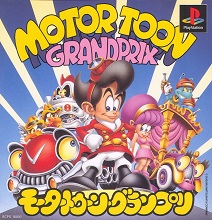
Motor Toon Grand Prix is a racing video game developed by Japan Studio's Polys Entertainment and published by Sony Computer Entertainment for the PlayStation. It was released exclusively in Japan on December 16, 1994. The game and its sequel were directed by Kazunori Yamauchi, and are precursors to his subsequent racing series Gran Turismo.
PlayStation is a video gaming brand that consists of five home video game consoles, two handhelds, a media center, and a smartphone, as well as an online service and multiple magazines. The brand is produced by Sony Interactive Entertainment, a division of Sony.
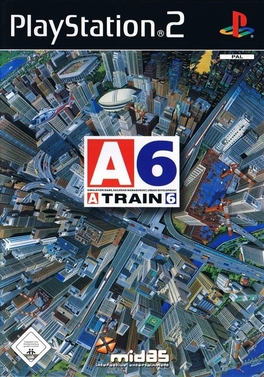
A-Train is a series of business simulation video games developed and published by Japanese game developer Artdink in Japan. The first game in the series was published in 1985. The first release in the United States was Take the A-Train II, published in 1988 by the Seika Corporation under the title Railroad Empire. However, the most well known U.S. release is Take the A-Train III, published in 1992 by Maxis as simply A-Train. There is also the spin-off title C.E.O.

The PlayStation 2 (PS2) is a home video game console developed and marketed by Sony Computer Entertainment. It was first released in Japan on 4 March 2000, in North America on 26 October 2000, in Europe on 24 November 2000, and in Australia on 30 November 2000. It is the successor to the PlayStation, as well as the second installment in the PlayStation brand of consoles. As a sixth-generation console, it competed with Nintendo's GameCube, Sega's Dreamcast, and Microsoft's Xbox. It is the best-selling video game console of all time, having sold over 160 million units worldwide, nearly triple the combined sales of its competing consoles.

Aquanaut's Holiday: Hidden Memories is a PlayStation 3 game developed by Artdink and published by Sony Computer Entertainment. A Japanese version was released in Japan and South East Asia on September 25, 2008. A translated English and Chinese version was released in Hong Kong, South Korea, Taiwan and South East Asia on November 20, 2008.

The PlayStation Vita is a handheld game console developed and marketed by Sony Computer Entertainment. It was first released in Japan on December 17, 2011, and in North America, Europe, and other international territories beginning on February 22, 2012. The console is the successor to the PlayStation Portable, and a part of the PlayStation brand of gaming devices; as part of the eighth generation of video game consoles, it primarily competed with the Nintendo 3DS.

Turnabout, known in Japan as Migi Hidari (U-SA) is a puzzle video game developed by Artdink for the PlayStation. The player's objective is to rotate the stage's screen 90 degrees clockwise or counterclockwise until colored balls fall and touch other balls or stationary blocks of the same color, causing the matched objects to disappear. The round is complete when all colored objects have been removed.

Kileak: The DNA Imperative, known as Kileak: The Blood in Japan and Europe, is a first-person shooter video game developed by Genki for the PlayStation. It was published in Japan by Sony Music Entertainment in January 1995, followed by a North American and European release in September 1995 by Sony Computer Entertainment as a launch game for the console. Kimitaka Matsumae, former member of the S.S.T. Band, wrote the game's soundtrack.

















